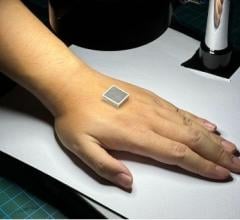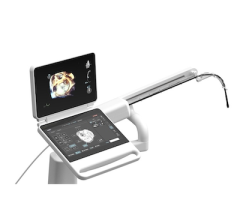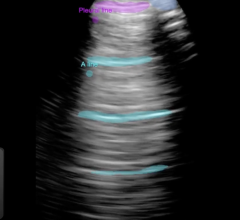News | March 26, 2015
Epsilon Announces ACC 2015 Study Results With EchoInsight Cardiac Echo Visualization, Analysis Software
March 25, 2015 — Cardiac visualization and analysis software provider Epsilon Imaging announced the results of four studies presented at the ACC 2015 that demonstrated improved quality in assessment of heart function with EchoInsight visualization and analysis. These studies included:
“Simultaneous Assessment of Longitudinal Strain in All 4 Cardiac Chambers: A New Method to Characterize Cardiomyopathy,” presented by Karima Addetia, M.D., Masaaki Takeuchi, M.D., et al. from the University of Chicago Medicine and University of Occupational and Environmental Health. The study analyzed 109 normal subjects and 62 patients with dilated cardiomyopathy using apical 4-chamber views with echo that included the left and right ventricles and both atria. 2-D speckle tracking was used in all four chambers in the same cardiac cycle with EchoInsight to obtain longitudinal strain. The study concluded simultaneous measurement of longitudinal strain provides new insight into inter-chamber relationships and may prove useful in evaluating cardiomyopathies.
“Left Atrial Strain Predicts Atrial Fibrillation Recurrence in Patients with Paroxysmal Atrial Fibrillation and Preserved Ejection Fraction Treated with Catheter Ablation,” presented by Mislav Vrsalovic, M.D., et al. from the University of Michigan. This study investigated novel echo strain parameters as predictors of outcome in atrial fibrillation patients treated with radiofrequency catheter ablation in 110 patients. Left atrial (LA) and ventricular (LV) global longitudinal strains were measured with 2-D speckle tracking using EchoInsight. Patients were followed for atrial fibrillation recurrence after catheter ablation. The study concluded LA strain by 2-D speckle tracking echo is a strong and independent predictor of atrial fibrillation recurrence after catheter ablation therapy in patients with paroxysmal atrial fibrillation and preserved ejection fraction (EF).
“Right Ventricular Longitudinal Strain: A Superior Measure of Outcomes in Patients with Pulmonary Arterial Hypertension,” presented by Karima Addetia, M.D., et al. from the University of Chicago Medicine. This study compared free wall longitudinal strain of the right ventricle (RV) together with other 2-D echo parameters in 93 patients. In addition, measurements were assessed for predicting all-cause mortality in pulmonary arterial hypertension patients. TAPSE (M-mode) and S (pulsed-wave Doppler) were measured in the basal segment of the right ventricular free wall. Fractional area change (FAC) and free wall longitudinal strains were measured using EchoInsight. The study concluded that RV free wall longitudinal strain is more predictive of all-cause pulmonary arterial hypertension mortality over TAPSE, S or FAC and should be included in 2-D echo protocols when evaluating and managing these patients.
“Right Ventricular Global and Regional Function as Assessed by Two-Dimensional Strain Imaging in Patients with Hypertrophic Cardiomyopathy,” presented by Alexandros Briasoulis, M.D., et al. from the Wayne State University/Detroit Medical Center. This study analyzed RV strain in patients with left ventricular hypertrophy secondary to either hypertrophic cardiomyopathy or hypertension without pulmonary hypertension. Echo was performed in 32 patients with hypertrophic cardiomyopathy, 21 patients with hypertension without pulmonary hypertension, and 11 healthy subjects. EchoInsight was used for segmental longitudinal strain analysis in apical views. RV global longitudinal strain was calculated by averaging septal and right free wall strains. An RV global longitudinal strain cut-off value of >-14.9% differentiated hypertrophic cardiomyopathy and hypertension without pulmonary hypertension with a 84% sensitivity and a 95% specificity. The study concluded RV strain parameters are impaired in patients with hypertrophic cardiomyopathy. Assessment of two-dimensional RV strain parameters could help differentiate between hypertrophic cardiomyopathy and hypertension without pulmonary hypertension.
To view the full abstracts: www.abstractsonline.com/pp8/#!/3658/


 December 10, 2025
December 10, 2025 









